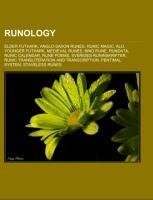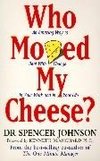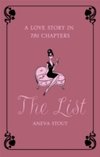
-
 Anglický jazyk
Anglický jazyk
Runology
Autor: Source: Wikipedia
Source: Wikipedia. Pages: 23. Chapters: Elder Futhark, Anglo-Saxon runes, Runic magic, Alu, Younger Futhark, Medieval runes, Bind rune, Rundata, Runic calendar, Rune Poems, Sveriges runinskrifter, Runic transliteration and transcription, Pentimal system,... Viac o knihe
Na objednávku, dodanie 2-4 týždne
12.60 €
bežná cena: 14.00 €
O knihe
Source: Wikipedia. Pages: 23. Chapters: Elder Futhark, Anglo-Saxon runes, Runic magic, Alu, Younger Futhark, Medieval runes, Bind rune, Rundata, Runic calendar, Rune Poems, Sveriges runinskrifter, Runic transliteration and transcription, Pentimal system, Staveless runes, Codex Sangallensis 878, Cipher runes, Dalecarlian runes, Runa ABC, Norse clans, Codex Vindobonensis 795. Excerpt: The Elder Futhark (or Elder Fuþark, Older Futhark, Old Futhark) is the oldest form of the runic alphabet, used by Germanic tribes for Northwest Germanic and Migration period Germanic dialects of the 2nd to 8th centuries for inscriptions on artifacts such as jewellery, amulets, tools, weapons and runestones. In Scandinavia, the script was simplified to the Younger Futhark from the late 8th century, while the Anglo-Saxons and Frisians extended the Futhark which eventually became the Anglo-Saxon futhorc after Proto-English /a/ developed to /o/ in nasal environments. Unlike the Younger Futhark, which remained in use until modern times, the knowledge of how to read the Elder Futhark was forgotten, and it was not until 1865 that the Norwegian scholar Sophus Bugge managed to decipher it. The Elder Futhark (named after the initial phoneme of the first six rune names: F, U, Th, A, R and K) consist of twenty-four runes, often arranged in three groups or ætts of eight each. In the following table, each rune is given with its common transliteration: þ corresponds to . ï is also trans-literated as æ, and may have been either a diphthong, or a vowel near or . z was Proto-Germanic , and evolved into Proto-Norse , and is also transliterated as R. The remaining transliterations correspond to the IPA symbol of their approximate value. The earliest known sequential listing of the alphabet dates to 400 and is found on the Kylver Stone in Gotland: uþarkghnijpïzstbeml¿doTwo instances of another early inscription were found on the two Vadstena and Mariedamm bracteates (6th century), showing the division in three ætts, with the positions of ï, p and o, d inverted compared to the Kylver stone: fuþarkgw; hnijïpzs; tbeml¿odThe Grumpan bracteate presents a listing from 500 which is identical to the one found on the previous bracteates but incomplete: fuþarkgw ... hnijïp(z) ... tbeml(¿)(o)d The Elder Futhark is encoded in Unicode within the unified Runic range, 16A0-16FF; as such, any font with
- Vydavateľstvo: Books LLC, Reference Series
- Rok vydania: 2012
- Formát: Paperback
- Rozmer: 246 x 189 mm
- Jazyk: Anglický jazyk
- ISBN: 9781157567226







 Nemecký jazyk
Nemecký jazyk 




